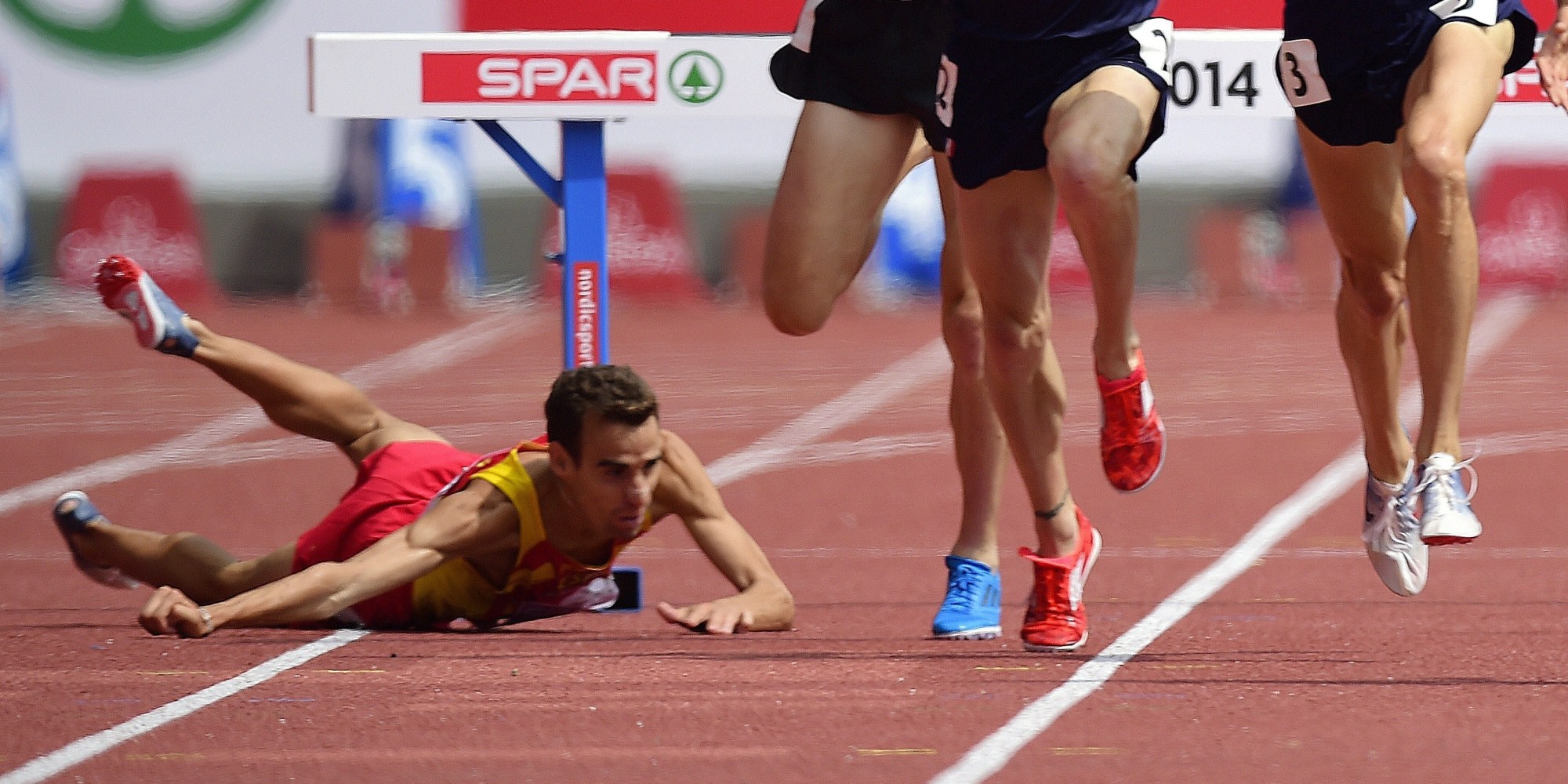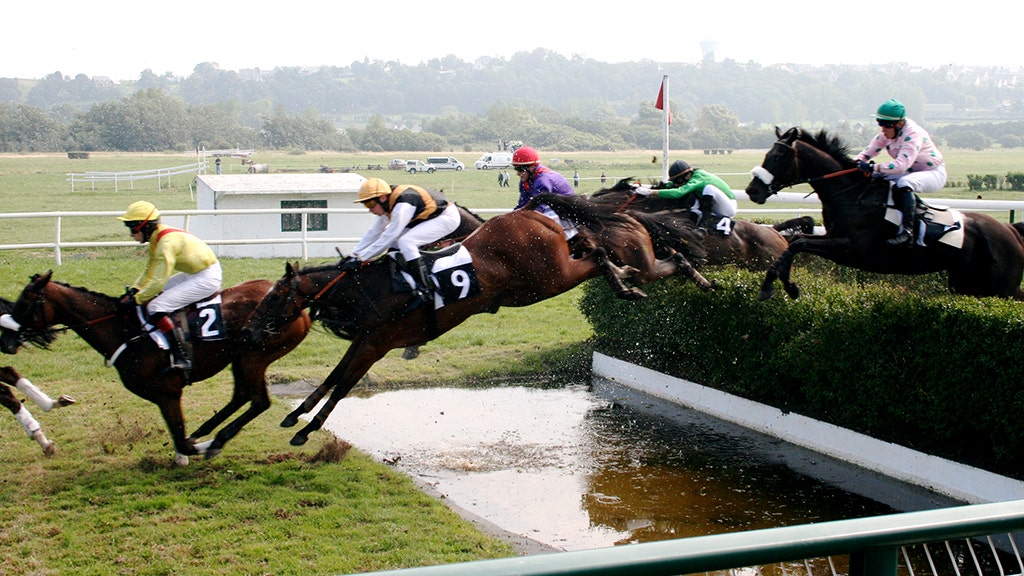Steeplechase Fall Mechanics

Steeplechase falls are a common occurrence in this equestrian sport, often resulting from the combination of high speed, challenging obstacles, and the inherent risks associated with horse riding. Understanding the biomechanics of these falls is crucial for both riders and spectators, allowing for better safety precautions and a deeper appreciation of the sport’s inherent dangers.
Types of Steeplechase Falls
Steeplechase falls can be categorized into three main types: trips, spills, and dismounts. Each type involves different factors and results in distinct outcomes for both the rider and the horse.
- Trips occur when the horse stumbles or loses its footing, often due to uneven terrain, slippery conditions, or a misstep while negotiating an obstacle. The horse may lose its balance and fall, often resulting in the rider being thrown from the saddle.
- Spills occur when the horse loses its balance and falls over, usually due to a sudden movement or a loss of control. These falls can be more severe than trips, as the horse may roll over the rider, potentially causing serious injuries.
- Dismounts occur when the rider intentionally dismounts the horse, usually due to a perceived danger or a loss of control. This is often a safety measure taken by the rider to avoid a more serious fall or injury.
Impact of Falls on Rider and Horse
The impact of a fall on both the rider and the horse can vary significantly depending on the type of fall, the speed of the horse, and the severity of the impact.
- Riders can experience a range of injuries, from minor bruises and sprains to severe fractures and concussions. In some cases, falls can lead to long-term disability or even death.
- Horses can also suffer injuries from falls, including broken bones, soft tissue injuries, and concussions. While horses are generally resilient animals, they can also sustain serious injuries that require extensive rehabilitation.
Biomechanics of Steeplechase Falls
The biomechanics of a steeplechase fall are complex and influenced by various factors, including the horse’s speed, the height of the obstacle, and the rider’s technique.
- The horse’s speed is a significant factor, as higher speeds increase the impact force and the likelihood of serious injuries.
- The height of the obstacle also plays a role, as higher obstacles require the horse to jump higher and potentially land with less stability.
- The rider’s technique is crucial in minimizing the risk of a fall. Proper riding skills, including balance, control, and the ability to anticipate the horse’s movements, can significantly reduce the likelihood of a fall.
A steeplechase fall can be a complex event, influenced by various factors. Understanding these factors can help riders, trainers, and spectators better appreciate the risks involved and take appropriate safety measures.
Steeplechase Fall Safety and Prevention

Steeplechase racing, with its thrilling combination of speed and obstacles, is inherently risky. While the sport is exhilarating, it’s crucial to prioritize safety for both horse and rider. Implementing robust safety protocols and a comprehensive approach to prevention are paramount in minimizing the risk of falls and ensuring a safer experience for everyone involved.
Common Safety Protocols, Steeplechase fall
Implementing comprehensive safety protocols is crucial in minimizing the risk of falls in steeplechase racing. These protocols aim to mitigate potential hazards and create a safer environment for both horse and rider.
- Experienced Riders: Only experienced and skilled riders with a proven track record of success in equestrian sports, particularly in jumping disciplines, are allowed to participate in steeplechase races. This ensures riders possess the necessary skills and judgment to navigate the course safely.
- Thorough Veterinary Checks: Before a race, horses undergo stringent veterinary checks to ensure they are physically fit and healthy. This includes examining their overall health, gait, and musculoskeletal system. This step helps identify any potential issues that could increase the risk of injury or falls.
- Rigorous Course Inspections: Regular inspections of the course are conducted by experienced officials to ensure its safety. This includes checking the integrity of fences, the condition of the ground, and the placement of obstacles. Any potential hazards are identified and rectified before the race.
- Emergency Medical Services: Qualified medical professionals and emergency response teams are always present at steeplechase events. This ensures swift and efficient medical attention can be provided in case of accidents or injuries.
Safety Checklist for Riders and Horses
A comprehensive safety checklist helps ensure both rider and horse are adequately prepared for the demands of a steeplechase race. This checklist encompasses various aspects, including equipment, training, and race conditions.
- Equipment:
- Saddle: The saddle must be properly fitted to the horse and designed for jumping, providing a secure and comfortable ride.
- Bridle: The bridle should be properly fitted and adjusted to ensure it doesn’t restrict the horse’s movement or cause discomfort.
- Stirrups: Stirrups must be securely fastened and adjusted to the rider’s leg length, allowing for a stable and balanced position.
- Safety Gear: Riders are required to wear protective gear, including a helmet, body protector, and boots. This gear helps mitigate the impact of falls and minimize the risk of serious injuries.
- Training:
- Jumping Technique: Both horse and rider must be proficient in jumping techniques, ensuring they can clear obstacles safely and efficiently.
- Course Familiarization: Riders and horses should be familiar with the course layout, including the location and type of obstacles. This allows them to anticipate potential hazards and adjust their approach accordingly.
- Fitness: Both horse and rider need to be in peak physical condition to handle the demands of a steeplechase race. Regular training and conditioning are crucial for endurance, stamina, and overall fitness.
- Race Conditions:
- Weather: Race officials monitor weather conditions closely, ensuring the track is safe for racing. Extreme weather conditions, such as heavy rain or strong winds, can pose risks and may lead to postponements or cancellations.
- Track Condition: The track surface must be well-maintained and free of obstacles or debris. Regular inspections are crucial to ensure a safe and consistent racing surface.
- Field Size: The number of horses competing in a race should be carefully considered to avoid overcrowding and potential collisions.
Course Design and Obstacle Construction
The design of the steeplechase course and the construction of obstacles play a crucial role in preventing falls. A well-designed course and carefully constructed obstacles minimize the risk of injury for both horse and rider.
- Obstacle Spacing: Adequate spacing between obstacles allows horses to gather their stride and approach each jump with sufficient momentum. This prevents them from being forced to jump too quickly or too close to the obstacle, reducing the risk of a fall.
- Obstacle Construction: Obstacles are designed to be sturdy and safe, using materials that are durable and resistant to damage. They are also built to provide a clear and safe landing area for horses, minimizing the risk of injury.
- Course Layout: The course layout is designed to provide a balanced challenge, including a variety of obstacles and terrain. This helps prevent horses from becoming fatigued or bored, reducing the likelihood of mistakes or falls.
- Safety Features: The course may include safety features such as water jumps with gradual slopes and landing areas, and fences designed to minimize the impact of a fall. These features help to protect horses and riders from serious injury.
Steeplechase Fall Impact on the Sport

Steeplechase falls, while a part of the sport, have a significant impact on the overall safety and reputation of steeplechase racing. They can cause serious injuries to athletes and spectators, leading to concerns about the sport’s inherent risks.
Factors Contributing to the Perception of Steeplechase as a Dangerous Sport
The perception of steeplechase racing as a dangerous sport stems from several factors.
- The presence of obstacles, particularly water jumps, creates a higher risk of falls compared to other track and field events.
- The high speeds at which athletes compete increase the severity of falls and potential injuries.
- The nature of the obstacles requires athletes to navigate challenging terrain, adding another layer of complexity and risk.
- The competitive nature of the sport, where athletes are pushing their limits, can lead to reckless maneuvers and increased risk of falls.
Historical Evolution of Safety Measures and Regulations
Over time, the sport of steeplechase has witnessed a gradual evolution in safety measures and regulations, aiming to minimize the risk of falls and their severity.
- The introduction of water jump safety regulations, including minimum water depth requirements and barrier placement, has significantly reduced the risk of serious injuries from water jumps.
- The implementation of stricter rules regarding obstacle design and placement, ensuring a safe and consistent course, has also contributed to a reduction in falls.
- The use of protective gear, such as helmets and specialized footwear, has become more prevalent in recent years, providing athletes with an added layer of safety.
- The development of advanced medical care and response protocols at steeplechase events has ensured prompt and effective treatment for athletes involved in falls.
Steeplechase fall – The steeplechase, a race of daring leaps and bone-jarring impacts, is a spectacle of athleticism and grit. But within this spectacle lies a hidden danger – the fall. A stumble on the water jump, a miscalculated stride over a hurdle, and the athlete is thrown to the unforgiving earth.
The risks are particularly high in the men’s steeplechase fall , where the speed and strength of the competitors amplify the potential for disaster. Yet, despite the danger, the allure of the steeplechase remains – a testament to the human spirit’s unwavering pursuit of victory, even in the face of potential catastrophe.
The steeplechase, a brutal test of endurance and agility, often leaves its mark on the athletes who dare to conquer its obstacles. Witnessing a fall in this unforgiving race is a gut-wrenching sight, a reminder of the sport’s inherent danger.
Yet, the spirit of the steeplechase endures, as exemplified by the rise of Ethiopian athletes like Lamecha Girma, whose journey can be explored further in this lamecha girma update. Their resilience, much like the resilience of the course itself, inspires awe and serves as a testament to the human spirit’s ability to overcome even the most daunting challenges.